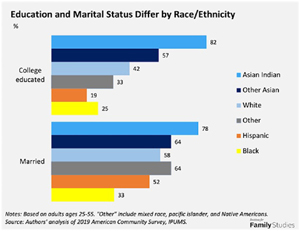The Power of Cultural Heritage: Examining Why Indian-American Students Outperform their Peers
By Professor Rohini Pandit

As the world becomes increasingly interconnected and diverse, it is important to examine the factors that contribute to academic success in different cultural groups. One group that consistently outperforms their peers in academics is Indian-American students. These students have been shown to excel in various subjects such as mathematics, science, and language arts, often earning top honors and recognition in prestigious academic competitions. So, what is the secret behind their academic success? Let us delve into the power of cultural heritage and explore the reasons why Indian-American students thrive in their studies.
Unveiling the Achievement Gap: A Look at Performance Metrics
As we seek to understand the academic success of Indian-American students, it is essential to unveil the achievement gap and examine the performance metrics. Studies have consistently shown that Indian-American students consistently outperform their peers in various academic subjects. When compared to other cultural groups, they often exhibit higher test scores, GPAs, and graduation rates. This remarkable academic performance cannot be attributed solely to individual ability or intelligence but rather indicates a larger trend within the Indian-American community. By delving into the performance metrics, we can gain valuable insights into the factors that contribute to their success. These metrics allow us to analyze the specific areas where Indian-American students excel. It is through a detailed examination of these performance metrics that we can better understand the underlying factors behind their achievements.
 Key Factors Behind Indian-American Students’ Performance
Key Factors Behind Indian-American Students’ Performance
The academic success of Indian-American kids can be attributed to some common factors that contribute to the strong academic performance of many Indian-American kids, including:
- Emphasis on Education: Many Indian-American families place a high value on education and see it as a pathway to success. Parents often encourage their children to excel in school and pursue higher education.
- Cultural Background: Indian culture traditionally values learning and knowledge. This cultural background can influence Indian-American children to have a strong work ethic and motivation to do well in school.
- Family Support: Indian-American families often provide a supportive environment for their children’s education. Parents may be actively involved in their children’s academic lives, offering guidance, tutoring, and resources.
- High Expectations: Parents and communities often have high expectations for Indian-American children, which can motivate them to work harder and achieve academic success.
- Cultural and Community Resources: Indian-American communities often have resources such as cultural organizations, tutors, and educational programs that can support children’s learning.
- Peer Influence: Positive peer pressure from other high-achieving Indian-American students can motivate children to excel academically.
- Access to Quality Education: Many Indian-American families prioritize living in areas with good school systems, which can contribute to their children’s academic success.
- Work Ethic: Indian-American children are often taught the value of hard work and discipline from a young age, which can translate into strong study habits and academic achievement.
Let us talk about a couple of specific factors that may contribute to the high academic achievement of Indian-American kids. One is that they are more likely to have two-parent households. According to a study by the Pew Research Center, 75% of Indian-American children live with both of their biological parents, compared to 50% of all children in the United States. Having two parents in the home can provide children with more emotional and financial support, which can help them succeed in school.
 Another reason Indian-American kids do better in school is that most parents are well educated. According to a recent study, 82% of Indian-American adults have a bachelor’s degree or higher, compared to 31% of all U.S. adults. This high level of educational attainment is likely due to a number of factors, including the cultural emphasis on education in Indian culture, the high value placed on higher education by Indian immigrants, and the fact that many Indian-American families have the financial resources to support their children’s education.
Another reason Indian-American kids do better in school is that most parents are well educated. According to a recent study, 82% of Indian-American adults have a bachelor’s degree or higher, compared to 31% of all U.S. adults. This high level of educational attainment is likely due to a number of factors, including the cultural emphasis on education in Indian culture, the high value placed on higher education by Indian immigrants, and the fact that many Indian-American families have the financial resources to support their children’s education.
Additionally, Indian-American students often benefit from cultural expectations and pressure to succeed academically. These expectations can be a driving force behind their exceptional performance as they strive to meet and exceed their parents’ and community’s expectations.
Furthermore, Indian-American students tend to have a strong work ethic and dedication to their studies. They are often highly motivated and demonstrate a high level of discipline and commitment when it comes to their academic pursuits. This commitment, coupled with their intellectual curiosity and thirst for knowledge, allows them to excel in various subjects.
Overall, the key factors behind Indian-American students’ performance include a strong support system at home, cultural expectations and pressure, and a strong work ethic and dedication to their studies.
Here is some research data on how Indian-American kids have done better in this study:
- According to a 2019 study by the National Center for Education Statistics, Indian-American students are more likely to graduate from high school (97%) and college (70%) than all students nationwide (85% and 41%, respectively).
- Indian-American students also tend to score higher on standardized tests than their peers. For example, on the 2018 SAT, Indian-American students scored an average of 1181 in math and 1187 in reading, compared to 521 and 533 for all students nationwide.
- These trends are reflected in the academic performance of Indian-American students in college. For example, a 2018 study by the Pew Research Center found that Indian-American students are more likely to graduate from college with honors (35%) than all students nationwide (23%).

Here are some additional insights into the success of Indian-American kids.
- Indian-American parents place a high value on education and invest heavily in their children’s academic success.
- Many Indian-American families participate in extracurricular activities and enrichment programs that help their children develop their skills and talents.
- Indian-American communities have a strong network of mentors and role models who support and encourage young people to pursue their academic goals.
Let me cite some specific examples of how Indian-American kids have done better in comparison to their peers in spelling bees, math competitions, and Intel Science competitions.
Spelling bees:
Since the year 1999, Indian Americans have come to dominate the Scripps National Spelling Bee, with an astounding 27 champions hailing from the Indian-American community.
In 2021, two-thirds of the semifinalists were of Indian American descent, at least nine of the 11 finalists were of Indian American descent, and all three finalists in the National Spelling Bee were Indian-Americans.
In 2019, Scripps named eight winners for the cup—”octochamps,” they coined themselves. Seven of the 2019 champions were of Indian descent.
- Almost 30 percent of qualifiers in 2021 were Indian Americans, which is 5 percent more than their share in 2017.
Math competitions:
- In 2022, Indian American students made up 39% of the participants and 46% of the winners of the USA Mathematical Olympiad (USAMO).
- Indian American students also performed well in the 2022 International Mathematical Olympiad (IMO), winning 4 out of 6 gold medals for the United States team.
- In 2022, the United States team for the International Mathematical Olympiad was made up entirely of Indian-American students.
- Indian-American students have won the Math Olympiad more than any other group of students.
- Indian-American students have also won the Putnam Mathematical Competition a record number of times.
Intel Science competitions:
In 2023, Indian American students won 14 of the 20 top prizes at the Intel Science Talent Search, including the top prize of $100,000. This was the fourth year in a row that Indian American students had won the top prize at the Intel Science Talent Search.
- Indian American students make up about 20% of the participants in the Intel Science Talent Search, but they win over 50% of the top prizes.
- Indian-American students have won the Intel International Science and Engineering Fair more than any other group of students.
- In 2022, the top three winners of the Intel International Science and Engineering Fair were all Indian-American students.
- Indian-American students have also won the Intel Science Talent Search a record number of times.
Strategies Adopted by Indian-American Families to Encourage Education

Pretty, young , smiling African man in formalwear using his laptop while leaning at bar ..
“Indian-American families have implemented various strategies to foster a culture of education and encourage academic success in their children. One of the key strategies is creating a supportive environment at home. These families provide a quiet study space, necessary materials, and resources to help their children thrive in their studies. ”
They also establish daily routines and schedules that prioritize study time, ensuring that their children develop good study habits and consistency.
Indian-American parents actively engage with their children’s education by attending parent-teacher meetings, staying informed about their child’s progress, and regularly communicating with teachers. This involvement helps to monitor their child’s academic performance and provide any necessary support or intervention.
Another strategy is the encouragement of extracurricular activities that complement academic learning. Indian-American families understand the importance of a well-rounded education and often encourage their children to participate in activities such as music, art, sports, or community service. This holistic approach helps develop diverse skills, promotes creativity, and enhances personal growth.
In conclusion, Indian-American students have done well in school for a number of reasons, including their strong family support, access to high-performing schools, and academic support networks.
“It’s crucial for parents to be mindful of the potential negative consequences of excessive pressure. Every child is different, and the focus should be on nurturing their overall well-being and helping them discover their own path in life. The parents also need to realize that just because you are a doctor or engineer your kids do not have to become doctors or engineers.”
About the Author
Professor Rohini Pandit is a renowned expert in family relations and parenting. She has been teaching at the University of Chicago for over 20 years, and her courses are consistently among the most popular in the department. Professor Pandit is known for his engaging and informative lectures, as well as her deep understanding of the complex dynamics of family life.
Professor Pandit is also a passionate advocate for family support programs and services. Professor Pandit’s work has had a significant impact on the field of family relations and parenting. Her research and teaching have helped to shape our understanding of how families work and how to support them.
























